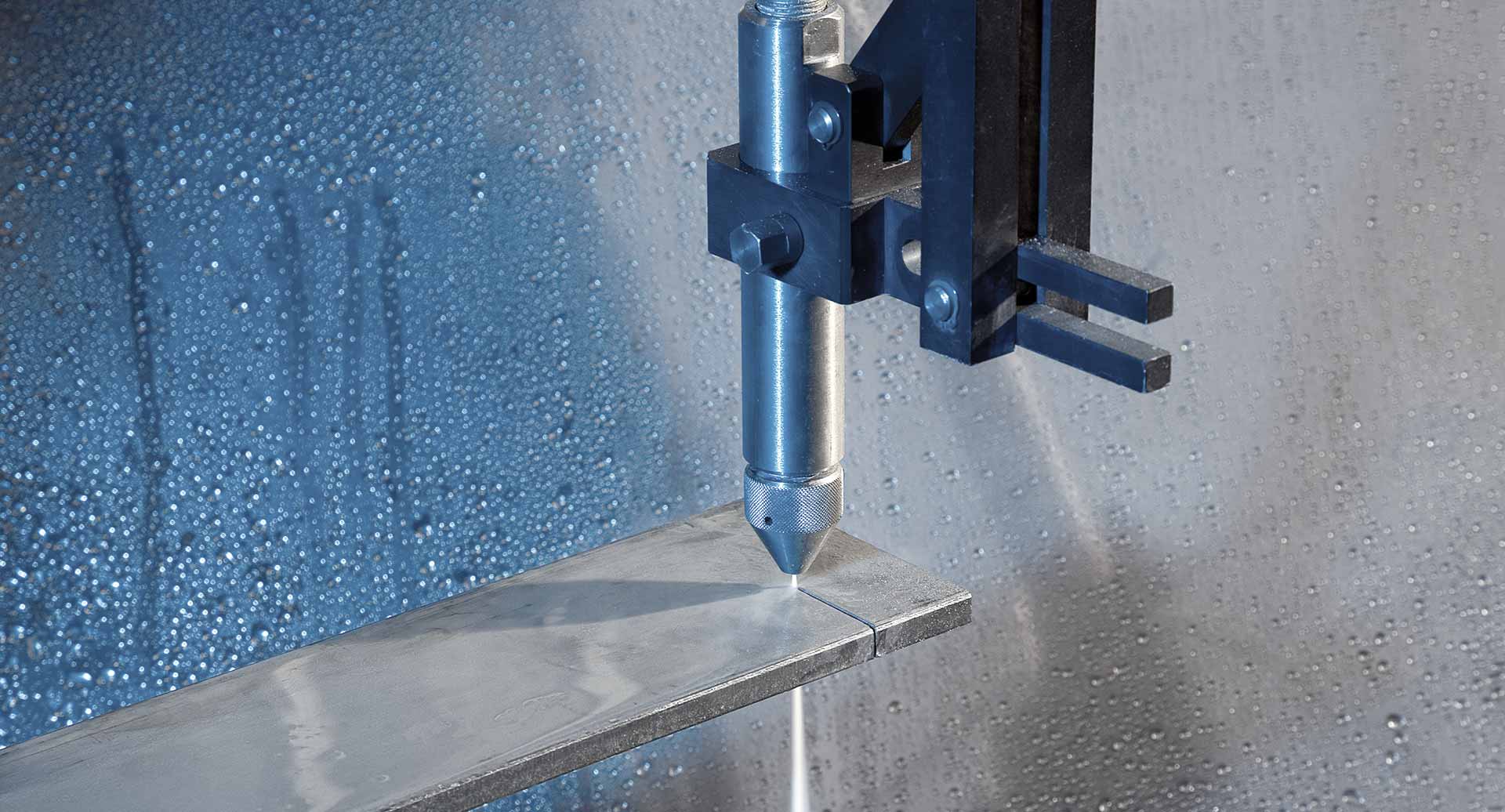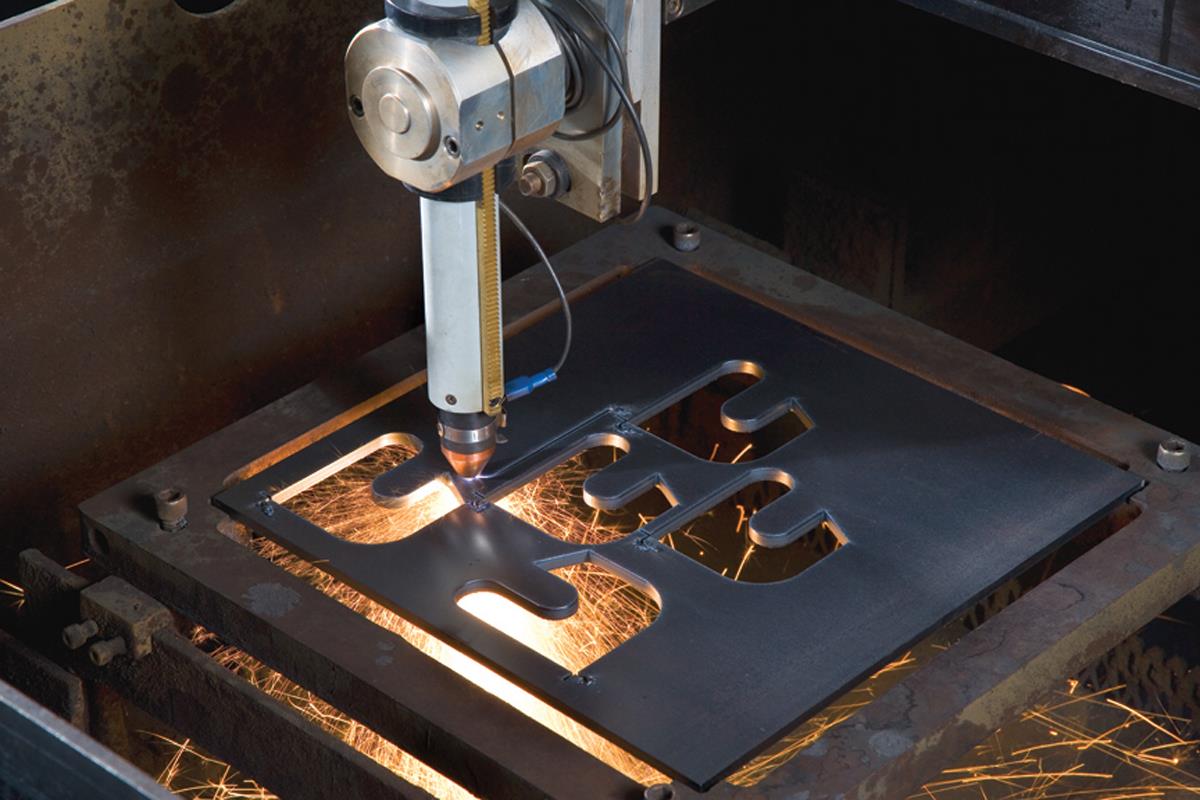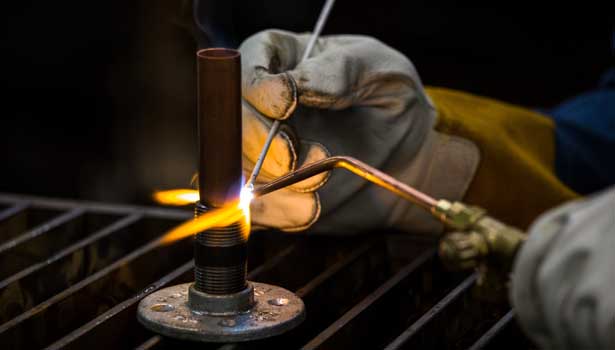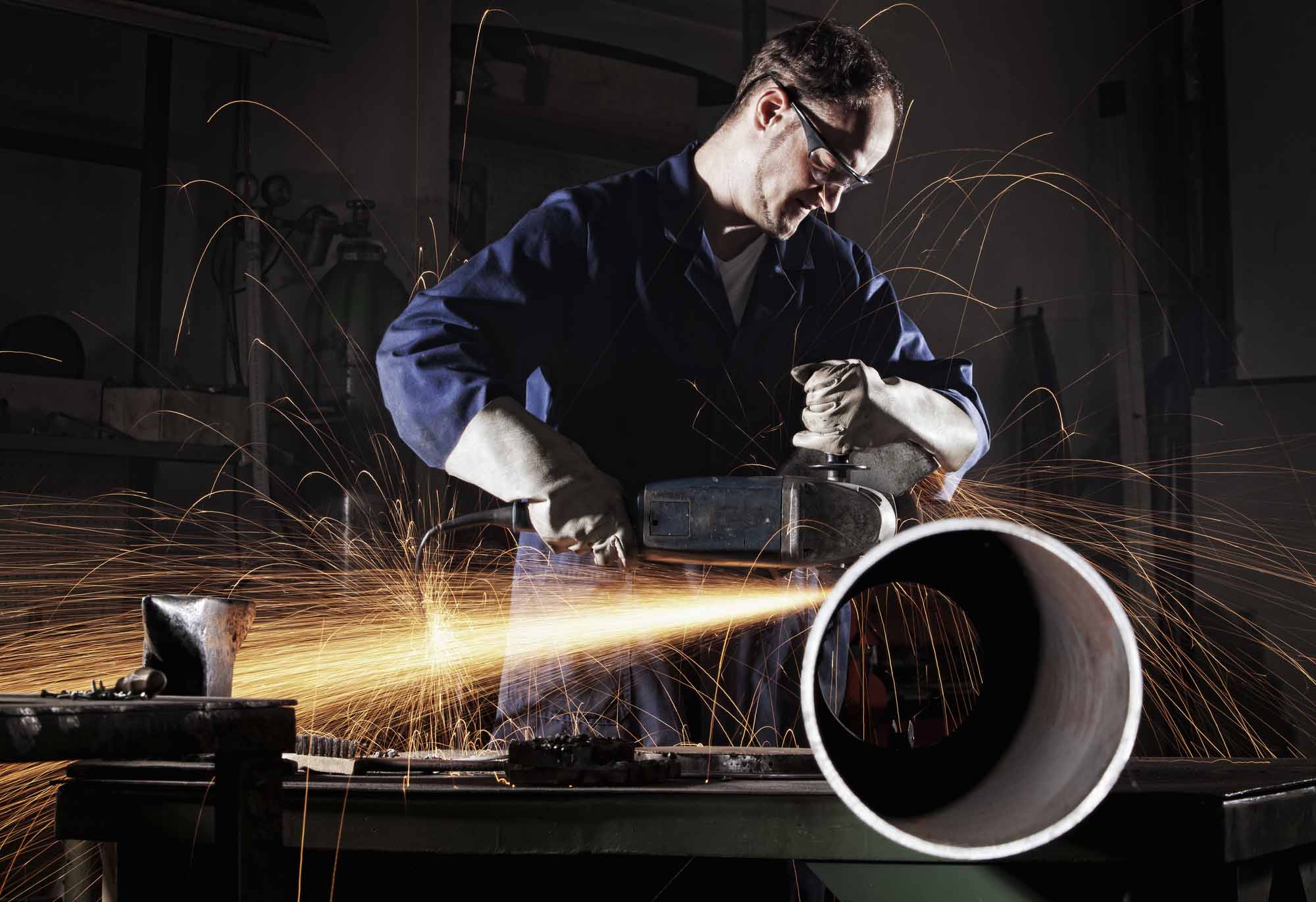Ways to Cut Metal
Cutting metal is a fundamental task in many industries, including construction, manufacturing, automotive, and DIY home projects.
The method you choose to cut metal can greatly affect your work’s quality, precision, and finish.
Whether working on a large-scale industrial project or a small home improvement task, understanding the different ways to cut metal is crucial. In this extended guide, we’ll explore various tools and techniques for cutting metal, ensuring you can confidently tackle your next project.
Hacksaw
The hacksaw stands out as a quintessential tool in the realm of metal cutting, renowned for its simplicity, accessibility, and versatility.
As a staple in both professional workshops and home garages, the hacksaw features a fine-toothed blade tensioned in a C-frame, making it adept at cutting through a wide array of metals including aluminum, copper, brass, steel, and iron.
This can confirm any reliable Tools Specialist.
Key Features and Benefits
- Versatility: The interchangeable blades of a hacksaw allow for adaptability to different types of metal and thicknesses. Blades vary in tooth count, typically ranging from 14 to 32 teeth per inch (TPI), where lower TPI blades are suited for thicker metals and higher TPI for thinner sheets, ensuring optimal cutting efficiency.
- Precision: With a controlled manual operation, hacksaws provide the operator with the ability to make precise cuts, following intricate lines or patterns that might be required in detailed metalwork projects.
- Accessibility: Hacksaws are widely available and affordable, making them an accessible option for everyone from professional tradespeople to DIY enthusiasts. Their manual operation also means they are portable and do not require access to power, making them usable in various settings and situations.
- Ease of Use: Despite requiring physical effort, especially when cutting through denser or thicker metals, hacksaws are relatively easy to use. With minimal training or experience, one can achieve effective results, making it an excellent starting tool for beginners in metalworking.
Techniques for Effective Cutting
- Proper Blade Selection: Choosing the right blade for the material you are cutting is crucial. A general rule of thumb is to have at least two teeth in contact with the material at all times for a smoother cut.
- Steady Pressure: Apply consistent, moderate pressure on the forward stroke and ease off on the return stroke to preserve the blade’s teeth and ensure a cleaner cut.
- Secure Clamping: Firmly clamping the metal piece can prevent vibrations and movement, resulting in more accurate cuts.
- Regular Maintenance: Keeping the hacksaw blade sharp and replacing it when worn out is essential for maintaining cutting efficiency and safety.
Limitations and Considerations
While the hacksaw is an incredibly useful tool, it does have limitations. Cutting through very thick or hardened steel can be labor-intensive and time-consuming. Power tools or specialized cutting equipment might be more efficient for such tasks. Additionally, the manual nature of the tool requires physical effort, which might not be suitable for all users or for a large volume of cutting.
Expert Endorsement
Tools specialists and experienced metalworkers often endorse the hacksaw for its reliability and effectiveness in cutting metal. They appreciate its ability to make precise cuts when power tools are too aggressive or when precision is paramount.
Circular Saw
A circular saw is another respectable option for cutting metal, particularly steel. The caveat here is that you need to fit your circular saw with the proper type of blade to be able to cut through metal.
Try fitting your circular saw with a ferrous metal cutting blade (you can find these at almost any hardware store) and cut through any piece of metal as easily as sliding a spoon through Jell-O. You will need to gear up with protective gear: clothes, goggles, headgear, etc. Why?
Steaming hot metal pieces will fly everywhere when using a circular saw to cut through metal; you don’t want to get burned by one of those hot chips of metal.
If you are looking for the best saw, chainsaw reviews Country Silo will help you decide on that.
Water

Water jet cutting is a versatile and powerful method that uses a high-pressure stream of water, often mixed with an abrasive substance, to cut through metal. This method is renowned for its precision and ability to cut through thick metal plates without generating heat, thereby eliminating the risk of altering the metal’s properties.
Water jet cutting is suitable for a wide range of metals and thicknesses and is often used for complex shapes and intricate designs.
- Steel;
- Aluminum;
- Titanium;
- Brass;
- Tool steel.
You can read more about how waterjets can cut through metal types quickly and easily. However, this is a pretty specialized piece of equipment that the regular ol’ handyman might not own.
It’s great, however, for a serious metal worker, industrial applications, or someone looking to up their metal-cutting game.
The “Score and Snap” Method
The “Score and Snap” method is a refined, low-tech approach to cutting metal, particularly effective for thin, malleable sheets like aluminum, tin, and thin-gauge steel.
This technique, which requires minimal tools and setup, is especially valued for its precision and simplicity in applications where exact cuts and clean lines are paramount.
 Enhanced Techniques and Tools
Enhanced Techniques and Tools
- Scoring Tools: While basic utility knives or sharp cutters are commonly used, specialized scoring tools can enhance precision and ease of scoring. These tools often feature carbide or diamond-tipped blades designed to create a deeper, more controlled score line with less effort.
- Straight Edges and Guides: For enhanced accuracy, using a metal straight edge or a specialized scoring guide can ensure straight, uniform lines. These guides can come with clamping features to secure them in place, reducing the risk of slippage and improving the quality of the score.
- Bending Tools: For a cleaner snap, tools like metal bending brakes or even simple homemade jigs can provide uniform pressure along the score line, resulting in a neat break without warping the remaining metal.
 Applications and Advantages
Applications and Advantages
- Custom Fabrication: This method is ideal for custom fabrication tasks that require precise dimensions and clean edges, such as in custom automotive paneling, art installations, and intricate architectural details.
- Quick Modifications: In construction and roofing, the ability to quickly modify metal sheets on-site without the need for heavy machinery is a significant advantage, allowing for on-the-fly adjustments and installations.
- Low-Cost and Accessibility: The “Score and Snap” method is highly accessible, requiring only basic tools and no power, making it a go-to for hobbyists, artists, and professionals in remote or power-limited locations.
 Innovative Applications and Techniques
Innovative Applications and Techniques
- Layered Scoring: For slightly thicker or more resistant metals, a technique involving multiple, progressively deeper scores can be employed to weaken the metal sufficiently for snapping.
- Heat Scoring: Applying a controlled heat source along the score line can soften the metal, making it easier to snap. This technique requires careful control to avoid altering the metal’s properties or causing injury.
 Safety and Precision Tips
Safety and Precision Tips
- Protective Gear: Always wear gloves to protect your hands from sharp edges and safety glasses to guard against metal shards or debris.
- Measuring and Marking: Take extra care in measuring and marking your score lines. A small mistake in scoring can lead to inaccuracies in the final piece.
- Controlled Bending: Apply steady and controlled pressure when bending the metal to snap it. Uneven pressure can result in jagged breaks or warp the metal.
 Limitations and Considerations
Limitations and Considerations
While the “Score and Snap” method offers many advantages, it is unsuitable for all situations.
Thicker metals, hardened steels, or metals with high tensile strength, like titanium, are incompatible with this method due to their resistance to scoring and snapping. Additionally, this method requires a level of manual dexterity and practice to achieve clean, precise breaks consistently.
The “Score and Snap” method remains a valuable technique in the metalworking toolkit, prized for its simplicity, precision, and the minimal equipment required.
Ideal for thin metals and applications demanding exact cuts, this method exemplifies how traditional techniques continue to hold relevance amidst technological advancements in metal cutting.
Whether for professional construction, custom metal fabrication, or artistic metalwork, mastering the “Score and Snap” method can unlock new possibilities in metal cutting, combining the artistry of manual craftsmanship with the precision of modern techniques.
Plasma Torch

Now we’re getting into the cool stuff. A plasma torch, also called a plasma cutter, uses heated gas (aka “plasma”) to cut through materials like metal.
It uses what’s referred to as “thermal cuts,” which means that the heated stream of gas cuts the metal using thermal heat energy.
This type of cutter can cut metal, usually only up to 0.25 inches thick, since it’s a smaller tool. However, the smaller size doesn’t necessarily mean that this isn’t a high-powered tool.
Think about it: a tiny stream of hot gas will cut through solid metal as easily as a vast saw can. In fact, this type of torch will do it faster than most saws will.
These torches can make precise cuts without distorting thin pieces of metal like saws and larger torches during the cutting process. This type of cutter can be used on any metal.
Furthermore, in industrial settings, a cnc plasma table Canada (or one elsewhere) is used for more precise and automated cutting.
Such equipment integrates advanced computer software and plasma torches to enhance accuracy and efficiency. This is particularly crucial for intricate cutting tasks.
Oxy-Acetylene Torch
Oxy-fuel cutting, also known as oxyacetylene cutting, is a traditional method that uses a combination of oxygen and fuel gas to generate a flame hot enough to cut metal.
This method is particularly effective for cutting thick steel plates and is widely used in industrial settings for dismantling and scrapping operations.
While oxy-fuel cutting is not as precise as some other methods, it is valued for its versatility and cost-effectiveness in cutting heavy materials.
This tool can be dangerous: high-pressure oxygen used to power the tool can explode, especially if near any type of oil. Acetylene is also a dangerous gas to work with; make sure you’re experienced enough to use this tool safely before using it to cut metal.
Tin Snips
Tin snips, also known as aviation snips, are hand tools designed specifically for cutting thin sheets of metal, most commonly tin, aluminum, brass, and thin-gauge steel.
They resemble scissors in their operation but are much more robust and are engineered to handle metal.
Tin snips come in various designs to make straight, left-curving, and right-curving cuts, allowing for flexibility and precision in shaping metal sheets.
Tin snips are an essential tool for HVAC professionals, roofers, and those engaged in metalworking crafts.
They are perfect for detailed work, such as cutting intricate shapes or trimming metal sheets to size.
The key advantages of using tin snips include their portability, ease of use, and the ability to make quick, clean cuts without the need for power tools or generating heat, which can alter the properties of the metal.
When using tin snips, it’s important to choose the right type for the cut you need to make and to ensure the blades are sharp to achieve a clean cut.
Proper hand positioning and leverage are crucial for efficient cutting, especially when working with tougher metals or long cuts. Safety gloves are recommended to protect your hands from sharp edges during cutting.
Tin snips may not be suitable for very thick or hardened metals, but for thin sheets, they offer a convenient and precise cutting solution.
Whether you’re working on a small home project, crafting, or professional metalwork, tin snips are a valuable tool to have in your toolkit for their simplicity and effectiveness in cutting thin metal sheets.
How to Cut Metal: 7 Ways Explained
So, there you have it. If you were wondering how to cut metal, you now have 7 different ways to try cutting pieces for your next project.
Whether you go old school with tin snips or the cool and mind-boggling water jet, your metal-cutting needs will be satisfied.
Are you looking for other DIY and tooltips? You can check out our blog section for all sorts of helpful information.




















